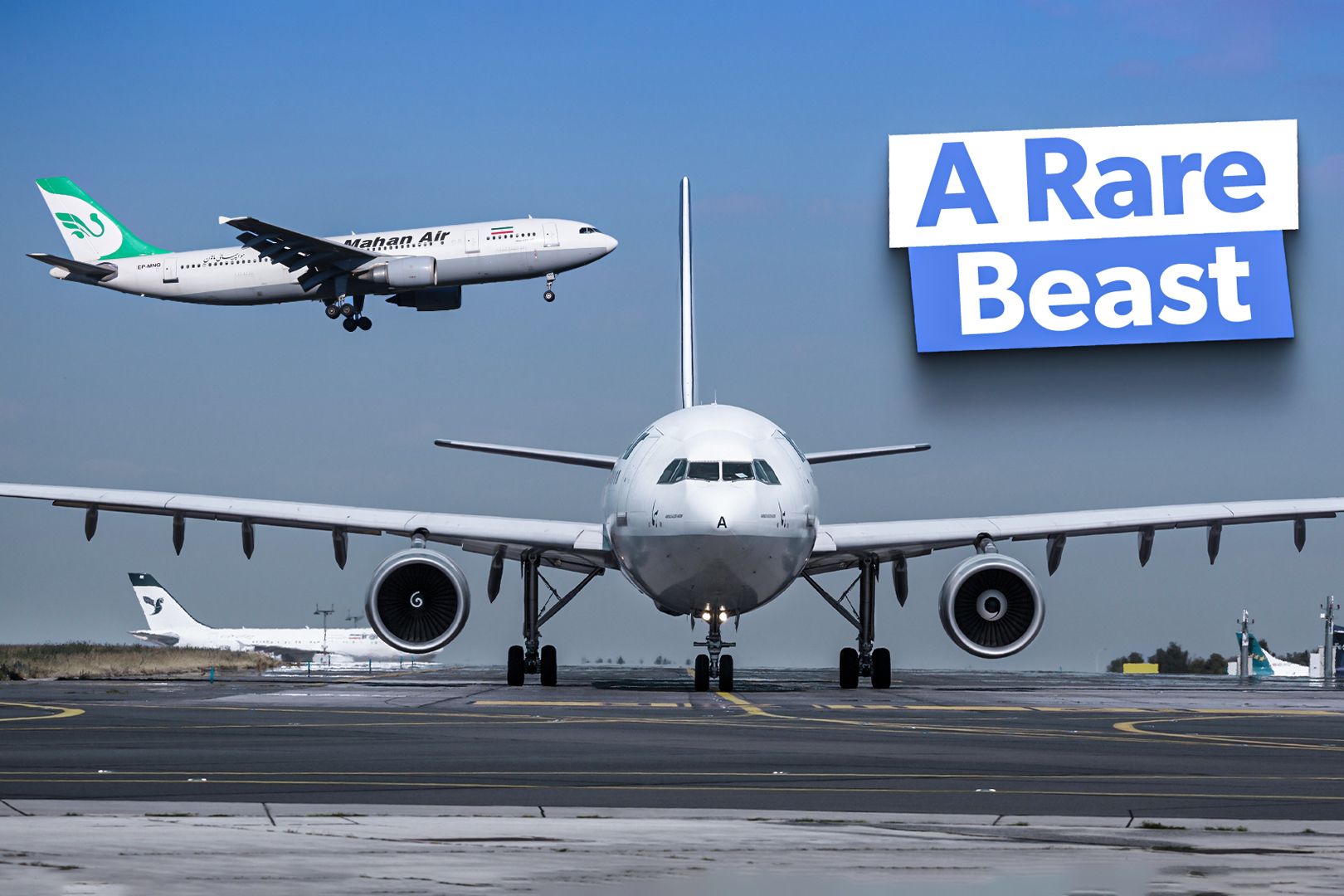The Airbus A300, a revolutionary aircraft introduced in 1972, remains enduring in the aviation world. As the first twin-engine widebody airliner, it was a game-changer regarding efficiency, range, and passenger comfort. Decades later, despite being primarily replaced by newer, more technologically advanced models, the A300 continues to fly with several airlines , demonstrating its remarkable durability and adaptability.
This September, five (mostly Iranian) airlines have scheduled flights using the Airbus A300, highlighting its ongoing relevance in the aviation industry. Here's a closer look at these airlines and their unique use of this classic aircraft. 1 Mahan Air 40,913 seats.

Mahan Air is currently the largest operator of the Airbus A300, with 163 flights scheduled for September, according to Cirium, an aviation analytic company . This extensive use accounts for 40,913 seats and generates 20,833,502 available seat miles (ASMs). Mahan Air predominantly utilizes the A300-600 variant, a slightly more modern model than the earlier B2 and B4 versions.
The A300-600 offers a perfect blend of passenger capacity and cargo space, making it ideal for medium-haul routes across the Middle East and Asia. For Mahan Air, the A300 plays a crucial role in their strategy to maximize fleet efficiency. The aircraft is often deployed on routes with high passenger and cargo demand.
The ample belly cargo space of the A300 allows Mahan Air to transport substantial freight, an essential feature for an airline that balances passenger service with significant cargo operations. Despite the global trend towards newer aircraft models, this versatile usage of the A300 has cemented its place in Mahan Air's fleet. Due to heavy sanctions on Iran , airlines like Mahan Air have an 'interesting' mixture of aircraft.
According to Mahan Air : Airbus A300-600 : 10 aircraft Airbus A310-300 : 5 aircraft Airbus A340-600 : 3 aircraft Airbus A340-300 : 4 aircraft Boeing 747-300 : 2 aircraft Boeing 747-400 : 1 aircraft Airbus A321-200 : 5 aircraft Airbus A320-200 : 6 aircraft BAe 146 : 7 aircraft 2 Iran Air 39,526 seats. Iran Air follows closely behind Mahan Air with 156 Airbus A300 flights scheduled for September, according to Cirium, an aviation analytic company . These flights offer a total of 39,526 seats and generate a substantial 42,871,438 ASMs.
Iran Air's reliance on the A300 is partly due to its need to operate effectively within the constraints of geopolitical factors that limit fleet renewal. The A300's role in Iran Air's operations is vital, serving on both regional and longer international routes. It can sometimes be found in Europe.
The high ASM figure for Iran Air reflects the airline's strategy of using the A300 on longer routes where its range and capacity can be fully utilized. The A300 is well-suited for flights within the Middle East and to parts of Europe and Asia, allowing Iran Air to maintain a vast network despite fleet limitations. For passengers, flying on an Iran Air A300 offers a glimpse into the past, with the aircraft's distinct cabin features and operational characteristics providing a unique travel experience.
Istanbul is far from glossy new aircraft and is all the more exciting for it. 3 Qeshm Air 33,536 seats. Qeshm Air is the third-largest operator of the Airbus A300, with 128 flights scheduled for September.
The airline's A300 fleet provides 33,536 seats and generates 42,697,616 ASMs, reflecting the aircraft's extensive use on longer routes. Qeshm Air uses the A300 for domestic and international flights, leveraging the aircraft's robust design to handle various route demands. Many airlines have operated the A300 over the years, including American Airlines and Thai Airways: 4 Iran AirTour 26,462 seats.
Iran AirTour has 101 Airbus A300 flights scheduled for September, offering 26,462 seats and producing 26,569,682 ASMs. The airline primarily operates the A300 on regional routes within Iran and to nearby international destinations. Kish Air's strategic use of the A300 reflects its focus on maximizing seat capacity and cargo space, catering to a diverse range of passenger and freight needs.
The A300 remains a reliable workhorse for Iran Airtour, providing the flexibility needed to adapt to varying market conditions. The aircraft's design is well-suited to handling both short—and medium-haul routes, allowing Iran Airtour to efficiently manage its fleet while maintaining a broad network of destinations. Iran Airtour operates a variety of aircraft according to Air Fleets: Aircraft Type Number of Aircraft Airbus A300 4 McDonnell Douglas MD-82 2 McDonnell Douglas MD-83 4 Airbus A320 5 5 Meraj Airlines 15,720 seats.
Meraj Airlines, another significant user of the Airbus A300, has scheduled 60 flights this September, providing 15,720 seats and generating 20,090,160 ASMs. The airline uses the A300 for passenger and cargo operations, capitalizing on the aircraft's flexibility and capacity. Meraj Airlines has found a niche in using the A300 on routes that require a balance of passenger service and freight capability, a role newer aircraft models might not fulfill as cost-effectively.
The carrier flew the type for more than two decades..



















